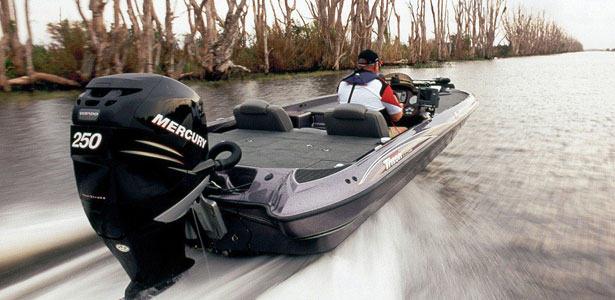
If your outboard motor is going to be out of commission during the cold winter months, it’s important to ensure that you do all the necessary preparations to make sure it will be safe from rust, corrosion and damage caused by freezing or trapped water.
Like any precision instrument, your outboard requires precise care to keep it running at peak performance to ensure that it maintains this level of performance after being out of use for two months or longer, for instance, during the winter season. We recommend a full round of measures to correctly prepare your outboard for temporary decommissioning, and that quality marine maintenance products, such as the Quicksilver or Mercury Precision range, are used during this exercise.
It’s important to know that petrol containing alcohol (ethanol or methanol) can cause acid formation during storage which can damage your outboard’s fuel system. If the petrol you use contains alcohol, it’s advisable to drain as much of the remaining petrol as possible from the fuel tank, remote fuel line and the engine fuel system.
Then fill the fuel system – the tank, hoses, fuel pump and carburettors - with treated (stabilised) fuel to help prevent formation of varnish and gum. If you have a portable fuel tank, pour the required amount of petrol stabiliser (follow the instructions on the container) directly into the fuel tank and tip the fuel tank back and forth to thoroughly mix the stabiliser with the fuel. If the tank is permanently installed, mix the stabiliser in a separate container with about a litre of petrol and then pour this mixture into the tank.
Carburettor Models
If you have a carburettor model, place the outboard in water or connect a flushing attachment for circulating cooling water. Run the engine for ten minutes to allow treated fuel to reach the carburettor. Once you’re sure that the fuel system has been fully prepared for storage, you can turn your attention to the other internal engine components.
While the outboard is in water or is connected to a flushing attachment, start the engine and let it run in neutral to warm up. Then with the engine running at fast idle, stop the fuel flow by kinking the remote fuel line and running the engine until it stops, draining the fuel system. When the engine begins to stall, quickly spray Quicksilver or Mercury Precision Lubricants Storage Seal into the carburettors until the engine stops from lack of fuel.
Now remove the spark plugs and inject a five-second spray of storage seal around the inside of each cylinder. Rotate the flywheel manually several times to distribute the storage seal in the cylinders, then reinstall the spark plugs and remove the fuel connector from the engine.
EFI Models
For Electronic Fuel Injection (EFI) models remove the spark plugs and add about 30 ml of engine oil into each spark plug hole.Rotate the flywheel manually several times to distribute the oil in the cylinders. Reinstall the spark plugs.
Remove the water separating fuel filter and empty its contents into a suitable container. You should replace this filter annually or after every 100 hours of operation ¾ or if a large amount of fuel contamination is present.
Carburettor and EFI Models
The next step is to drain and refill the gear case lubricant and then apply grease to the propeller shaft and all sliding parts, joints, nuts and bolts.
If the outboard has a hose flush attachment and you plan to store it in freezing temperatures, it’s best to drain the water from the hose and flush attachment.
Now lubricate all the outboard’s external components, touch up any paint nicks and spray Quicksilver or Mercury Precision Lubricants Corrosion Guard on external metal surfaces.
How you position the outboard for storage is also important - store the engine in an upright (vertical) position to allow any water to drain out.
Finally remove the battery, clean the exterior with fresh water or compressed air and apply grease or baseline to the battery terminals. Check the water level and recharge if necessary about once a month. Store the battery in a dry place with its cover attached.
Remember, when you are ready to commission your outboard after storage, never start or run the engine - even momentarily - without water circulating through all the cooling water intake holes in the gear case to prevent damage to the water pump or overheating of the engine.
*Phillip Kingma, Rutherford Marine, Tel: (011) 878-2600


 Visit us our
Visit us our